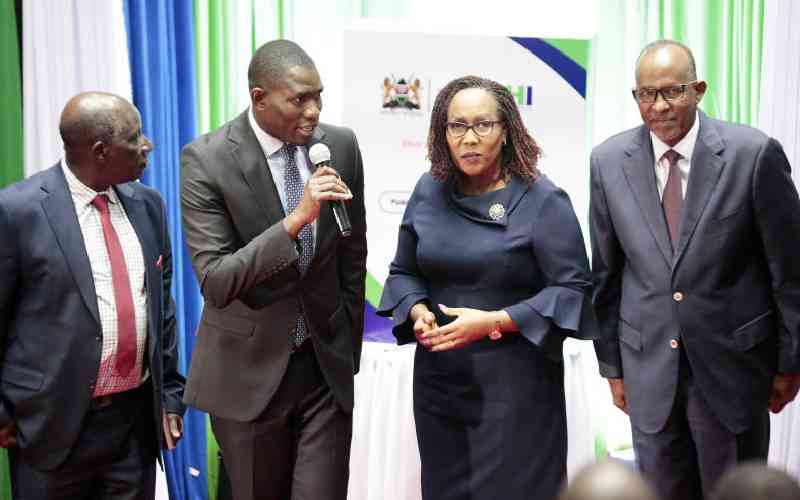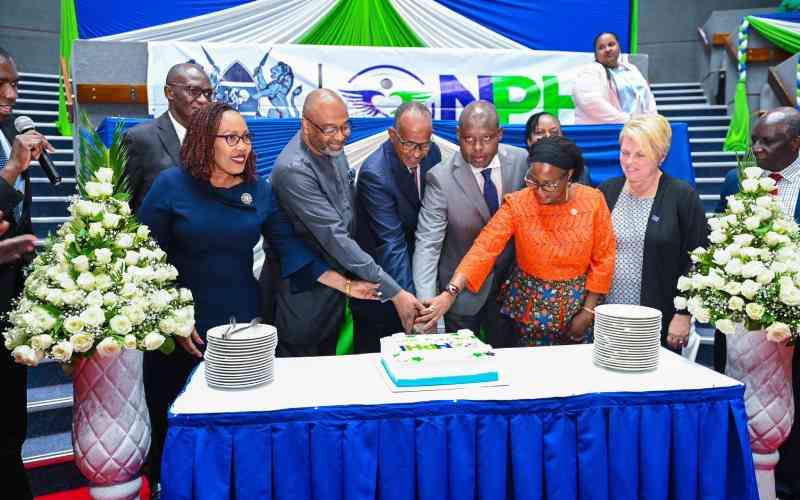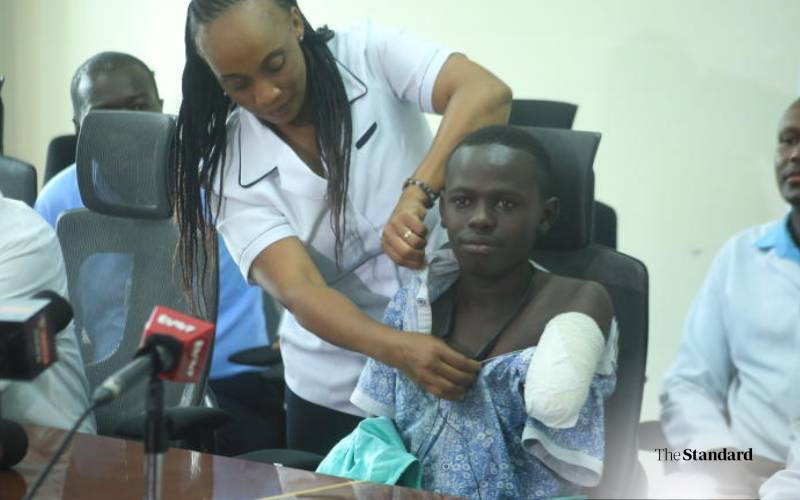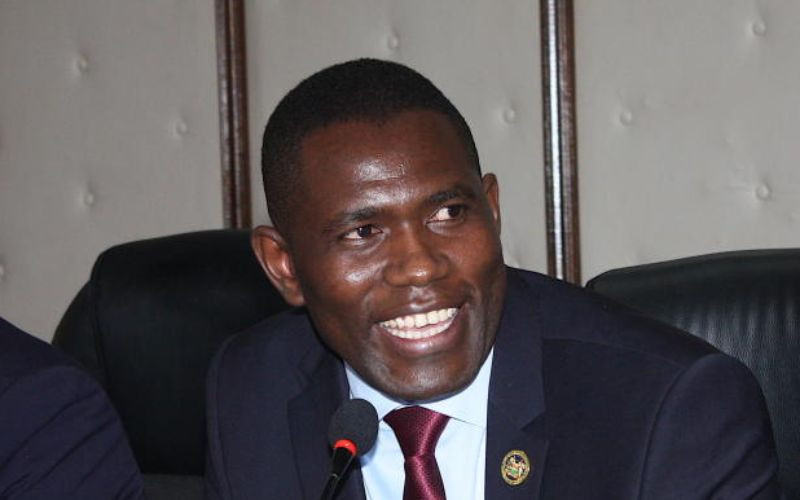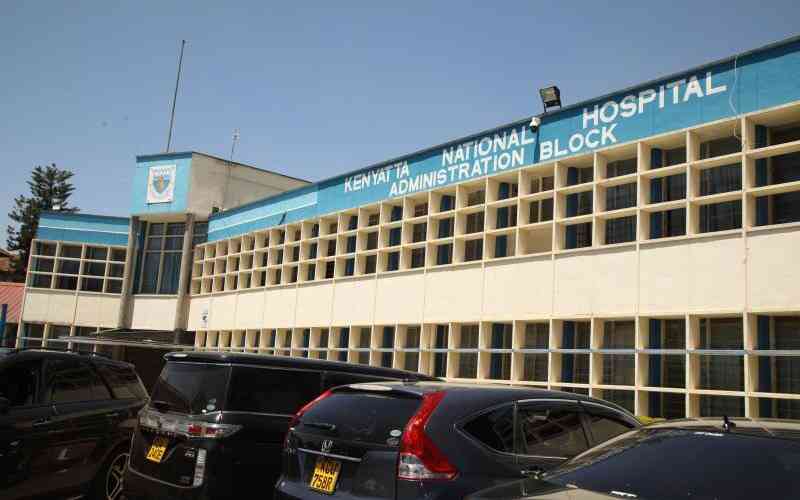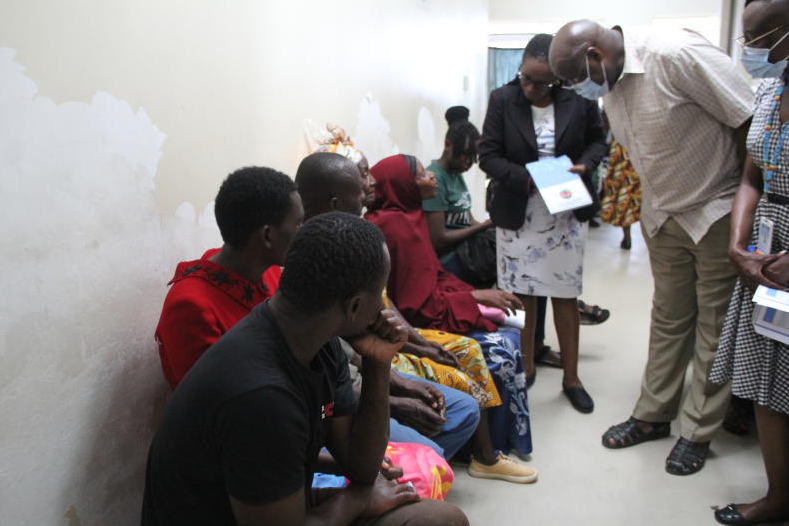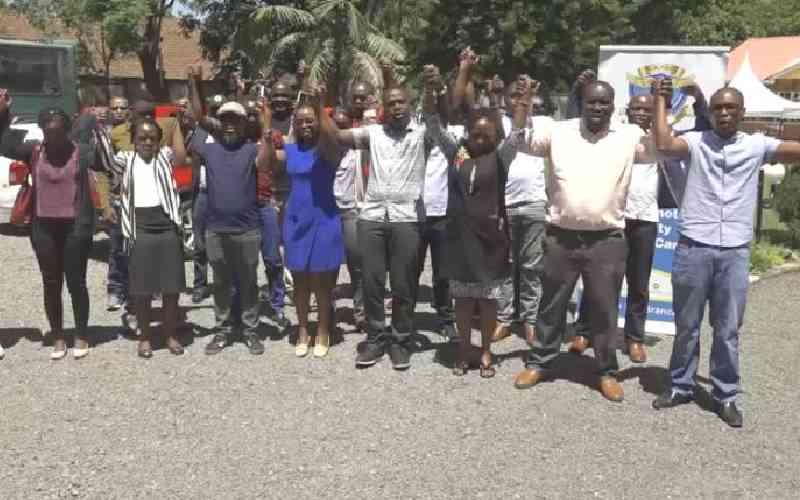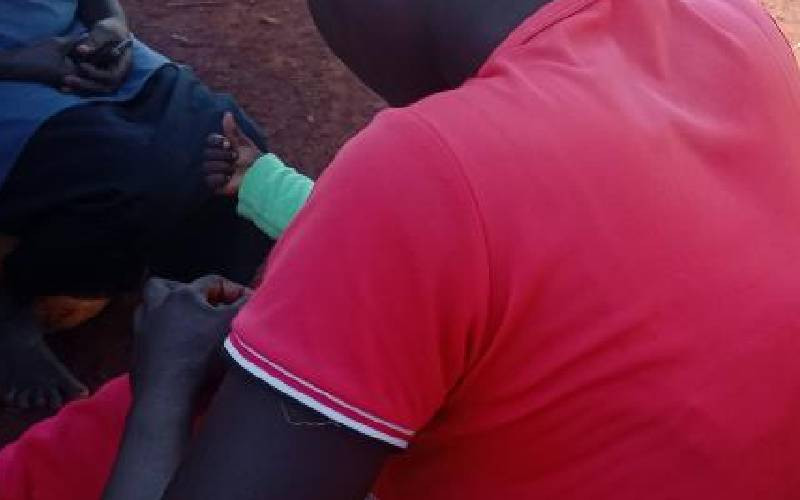
At only 15 years old, Dolly is nursing a 10-month-old baby.
As her peers wake up in the morning to prepare for school, the adolescent mother prepares to report to her casual job.
She works on farms or fetches water for families in the remote village of Obambo in Siaya County.
Dolly, a firstborn in a family of six siblings claims she was coaxed into a sexual relationship by a boda boda operator who gave her Sh100. She used the money to buy sanitary towels.
A few months after their encounter, she discovered she was pregnant and moved in with him. The cohabitation didn't last long as the man was abusive and had several other partners.
When they parted ways, Dolly was diagnosed with HIV.
"I am bitter with everyone. I am yet to come to terms that I will live to take anti-retroviral (ARVs) for the rest of my life. I have cried a lot of tears when I think of how my life turned out," says Dolly.
- How parents' silence fuel teenage pregnancy crisis
- Shifting epidemic: How fight against HIVAids has evolved over the years
- Rising HIV cases among older men and Gen Z worry experts
- Report raises concern over rate of men dying of AIDs complications
Keep Reading
"I wear a strong face to give hope to my son, but I am hurting."
Dolly is also isolated by her peers and faces stigma because of her HIV status.
Though she is on treatment, she has been defaulting because of the lack of adolescent-friendly health facilities.
"Collecting ARVs in a hospital set-up can be traumatising. Nurses ask lots of annoying intrusive questions. I therefore keep off treatment, not unless I have other infections," adds Dolly.
In the same neighbourhood, Mary, 16, cuddles her two-week-old baby.
Mary dropped out of school at Form Two after conceiving. The man responsible disowned the baby.
The second last born in a family of nine siblings depends on her mother for upkeep.
Lowest moment
"My mum remains my solace at my lowest moments. It pains to have my mum fend for my baby, yet the man whom I sired with the baby enjoys his life. I am told he married another woman whom they stay together," says Mary.
Mary's mother remains optimistic that the baby will grow into a productive adult.
"I yearned to see my daughter complete school, and later support me at my old age. However, whatever happened cannot be changed," says Mary's mother.
Mildred and Mary's cases mirror the struggle facing adolescents and young people who are exposed to the triple threat of early pregnancies, sexual violence, and HIV.
Barely seven years to the set deadline of ending HIV in Kenya, the National Syndemic Disease Control Council (NSDCC) notes that the triple threat is derailing the fight against ending the pandemic.
According to NSDCC, sexually gender-based violence and teenage pregnancy are proxy indicators of heightened risk of HIV infections.
"Pregnancy among adolescent girls is often associated with negative health and social outcomes to both the mother and the baby and may lead to intergenerational cycles of poverty, poor education, and unemployment," reads a section of a report by NSDCC.
When compared with older women, adolescents and young mothers have worse HIV-related outcomes, including higher new infections of HIV during pregnancy and breastfeeding, and lower rates of retention in HIV care and treatment, notes the council.
NSDCC chief executive, Ruth Masha, notes that it is worrying that even with the reduced prevalence of HIV to 6.4 per cent, new infections in adolescents and young persons are worrying.
"We must end the triple threat, as it triggers new infections in adolescents and young persons," says Dr Masha.
Among urban areas, Nairobi and Nakuru lead in cases of triple threat, whereas Homa Bay, Siaya, Migori, Kisii, and Uasin Gishu have fairly larger numbers in counties.
In Siaya, the leading sub-counties with new HIV infections in adolescents and young people include Gemu, Alego Usonga, and Bondo.
The three sub-counties are also leading in the number of teenage pregnancies.
To end the triple threat in Siaya, Steve Kathaka, regional HIV Coordinator with NSDCC in Kisumu and Siaya counties said several interventions are in place to end the triple threat.
Among interventions in place are men's engagement forums, where men are sensitised on the need to protect girls and young persons from sexual harassment
NSDCC is also working closer with the Department of Transport, more so boda boda operators, the Department of Health at the county level, and the Ministry of Education and the Ministry of Interior.
"We are winning triple threat through the Ministry of Interior. At the villages, chiefs are very vital because they know which child has not gone to school, and who is pregnant," said Kathaka.
The council launched a triple threat campaign in 2022 to address HIV, teen pregnancies, and sexual gender-based violence in children and young adults.
Despite a campaign to end HIV as a public health concern by 2030, Douglas Bosire, the officer in Charge of county Support Programmes at NSDCC said there is concern over proportionately increasing infections in adolescents and young adults.
"Adolescents are reporting syndemic factors namely HIV infections, early pregnancies and sexually based violence, challenges that are overlapping, and exacerbates occurrence of each other," said Bosire.
Data by NSDCC reveal that 41 per cent of new HIV infections occur among adolescents and young people aged between 15 and 24 years.
This year (2023), at least 3, 244 new infections in adolescents aged between 10 and 19 years were recorded, in addition to 7,307 among those aged between 15 and 24 years.
New infections
Also, adolescents and young people account for 41 per cent of all new HIV infections in 2022.
It is however worrying that adolescents infected with HIV are not seeking treatment.
"We have a population of young people, who are currently practising quite unprotected sexual encounters, which not only lead to HIV infections but other sexually transmitted infections," said Bosire.
The number of unwanted pregnancies among adolescents has also increased according to the recent data.
For example in 2022, there was a total of 260,000 children aged between 10 and 19 years who attended antenatal clinics.
To end the triple threat, the council is working with respective partners for example local administrators and community health workers to disseminate information at community levels, on preventive measures and support those in need of service.
"We want to account for every Kenyan child, wherever they are. We want to ensure those falling from school are taken back to school," said Bosire.
 The Standard Group Plc is a multi-media organization with investments in media platforms spanning newspaper print
operations, television, radio broadcasting, digital and online services. The Standard Group is recognized as a
leading multi-media house in Kenya with a key influence in matters of national and international interest.
The Standard Group Plc is a multi-media organization with investments in media platforms spanning newspaper print
operations, television, radio broadcasting, digital and online services. The Standard Group is recognized as a
leading multi-media house in Kenya with a key influence in matters of national and international interest.

